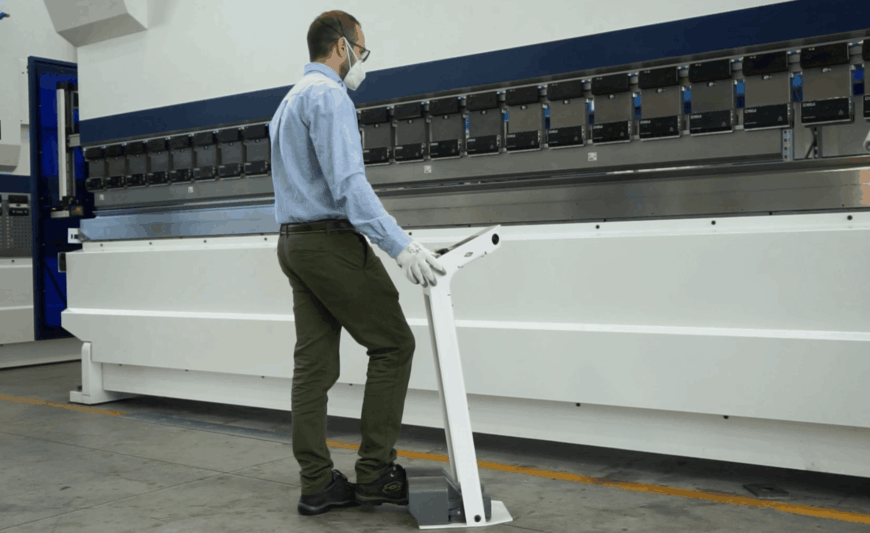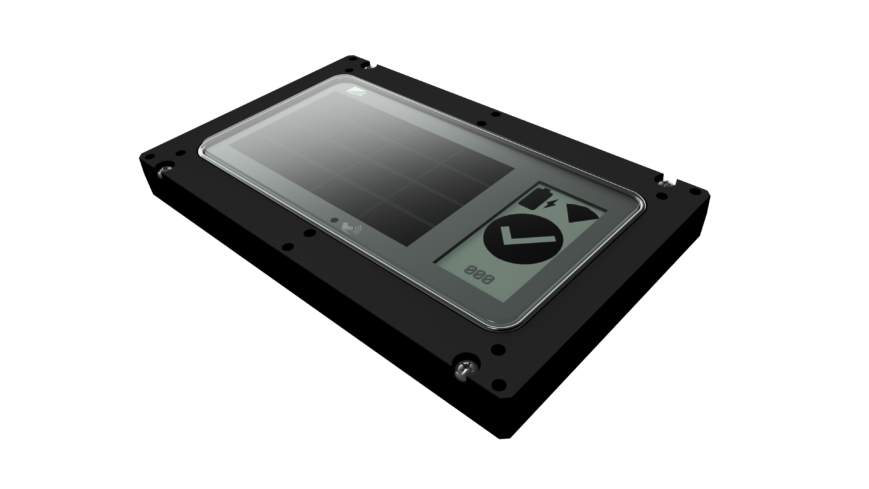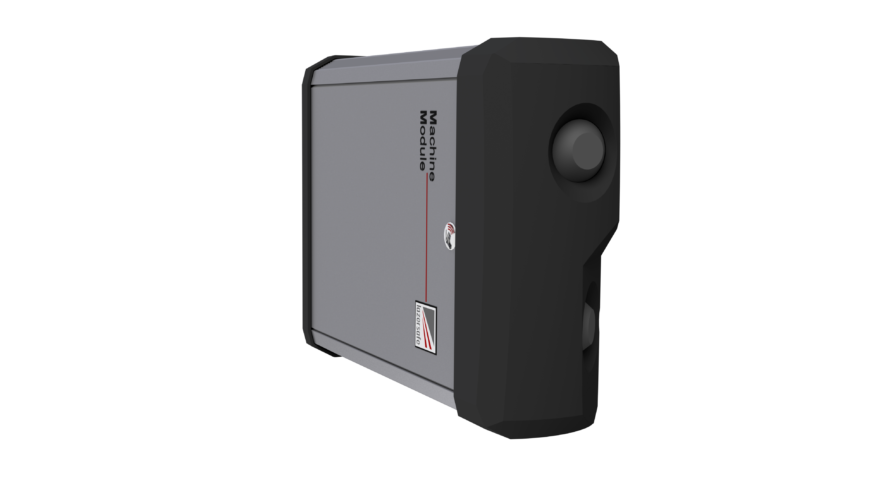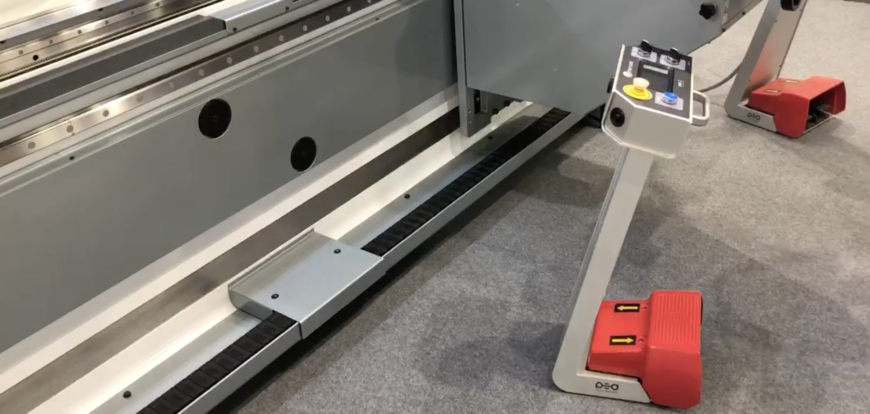
While hardwired pedals are the current standard method for a safe and reliable connection to the machine, foot pedal cables running across the floor tend to get in the way of machine operators, create potential tripping hazards and can make it difficult to move the pedal to a comfortable working position.
Wireless technology for remote operator controls, while not a new concept, has presented challenges for press brake manufacturers in terms of the development and implementation of reliable communications hardware, the safe processing of wireless commands, responsiveness and high energy consumption that requires high-capacity batteries and frequent recharging.
A new wireless safety communications technology has been developed by Lazer Safe, that now enables press brake manufacturers to easily incorporate wireless functionality into their existing foot pedals. The new wireless safety communications technology employs a unique SIL3 communications process that provides remote input and output connections between a remote wireless module and the press brake. The wireless system comprises a compact wireless remote module that houses the dual-channel communications hardware and antennas, an e-paper display, solar charging cell, customisable hardware inputs and a lithium-ion battery pack. The wireless module is incorporated into the foot pedal pedestal together with an array of ultrasonic sensors.
Wireless foot pedals offer several advantages over their wired counterparts in terms of improved ergonomics, reduced operator fatigue, eliminating down-time caused by damaged cables and removing tripping hazards for a safer work environment.

Flexibility to incorporate additional functions
The wireless remote module is incorporated into the design of the foot pedal pedestal and contains physical inputs for the foot pedal contacts plus auxiliary controls. The wireless pedal is paired with a module on the press brake that is interfaced with a machine safety controller that processes the incoming foot pedal signals.
The addition of remote wireless inputs in the foot pedal now gives press brake manufacturers the flexibility to incorporate additional functions to wireless foot pedal stations. While most wired pedals will include the same base functions such as the down and up pedal switches, manufacturers have also incorporated additional wireless controls including buttons for upper and lower tool clamping, an illuminated emergency stop button, machine reset, machine start / stop, and more.
Extremely low power consumption
A major advantage of the wireless technology is the extremely low power consumption. The method in which the data is transmitted is one of the keys in significantly reducing power consumption and thus eliminating the need for a heavy high-capacity battery and frequent recharging. In addition to the energy efficient design, the indoor solar cell that is incorporated into the wireless module uses ambient light as an auxiliary power source to extend the time between recharges by up to 20%.
Up to one month use from a single charge
A single charge can power the wireless foot pedal up to one month of normal usage. The operators are alerted when the battery level is low and down to a few days of charge remaining, giving them sufficient opportunity to recharge the battery. When the foot pedal does need to be recharged, a USB charging port on the foot pedal pedestal makes it relatively simple to plug the pedal into a charging port on the machine or through a standard USB charger.
E-Paper display
Also incorporated into the wireless module is a 25mm x 65mm E-Paper display. This active display presents a range of useful information for the machine operator including the connection status, battery level, and the status of optional auxiliary functions. Again, in keeping with the low-power design, the E-Paper display consumes very little energy, putting almost no additional load on the power supply.
Flexibility for multiple machines
Users can take advantage of sharing foot pedals across multiple machines, with the ability to pair them to the required machines for certain jobs. This means that fewer foot pedals would need to be purchased as they can be easily shared among multiple machines in a production facility. The paring process is simple and takes only a matter of seconds by pressing and holding the pairing buttons on the machine module and the foot pedal until the two are connected.
Of course, there are a few situations that could arise that may be cause for concern with wireless technology. Questions such as “What if the foot pedal is removed and operated from a remote location?”, or “Wouldn’t it be dangerous if the pedal was taken into the back of the machine where the machine could be operated?”. While both are valid concerns, additional safety technologies have been developed to provide both range and line-of-sight monitoring that ensure the distance and location of the foot pedal is always within pre-defined safety limits before the machine can be operated.
Range monitoring
Range monitoring enables the press brake manufacturer to set a maximum operating distance for the pedals used on each machine. The range can be configured and set by the manufacturer, adding an extra level of safety by ensuring the machine can only be operated when the foot pedal is within a predetermined range. This eliminates the possibility of the machine being operated from a remote and potentially unsafe distance or location, that may otherwise put anyone within proximity of the machine at risk. Say if an operator was changing tools, or a worker was performing machine maintenance, they may be at risk of injury if another person attempted to cycle the machine from a remote location without their knowledge.
Line-of-sight monitoring
The addition of line-of-sight monitoring technology also enhances the level of safety. Ultrasonic sensors are integrated into the wireless foot pedal pedestal as well as into the lower frame of the press brake. A set of sensors are installed on each end of the machine, with the option of a centrally mounted ultrasonic module that maintains line-of-sight in case of obstacles such as sheet followers and material loading tables.
Line-of-sight monitoring also prevents the machine from being operated if the pedal breaks line of sight with the ultrasonic sensors on the machine. For example, the press brake cannot be operated if the pedal was moved to the rear of the machine or hidden behind a wall or screen.

Ergonomic design
The need for good ergonomic design is becoming increasingly important for press brake operators. Spending several hours each day standing in front of a press brake and manually handling material puts a great deal of physical strain on an operator. This can lead to physical and mental fatigue which can be dangerous as a loss of concentration could lead to an operator making a mistake that could cause them an injury. Press brake manufacturers are constantly looking for ways to improve machine design and operating techniques to alleviate the strain on workers. While reductions in operator fatigue and improvements in accident minimisation is beneficial to a worker’s wellbeing, better ergonomic design will also have the added benefit of improved productivity.
Wireless technology now gives operators greater freedom to position the foot pedal anywhere across the front of the machine without the frustration of being tethered to a cable. This also helps with having the ability to easily set the pedal at a comfortable angle and especially beneficial when working with multiple tooling setups along the machine. With a wireless option, the operator can more easily move the pedal along the machine as they progress though each tooling station. Eliminating the foot pedal cable also frees up floor space so trolleys or carts used to transport and store material or completed parts can be positioned and moved around the press brake without restriction. Potential tripping hazards from cables lying across the floor are also eliminated, making for a safer and more efficient working environment.
Anyone that has ever experienced the inconvenience of a damaged foot pedal cable will know all too well the potential for significant machine downtime and lengthy production delays. Cable damage can be caused by heavy metal sheets being accidentally dropped or falling from the machine at the completion of a bend, striking and severing the pedal cable. While this may only damage the cable itself, in some cases this could potentially damage electronic components in the machine cabinet as well. In either case, any sort of cable damage causes major disruption to production until repairs are carried out and, in some cases, it could take several days before the machine is up and running again.

Improved ergonomic design, flexible functionality and improved productivity are just a few of the benefits that will be realised through wireless press brake foot pedal controls. Wireless enabled foot pedals are now available from press brake manufacturers including LVD, Vimercati, Gasparini Industries and ACCURL.